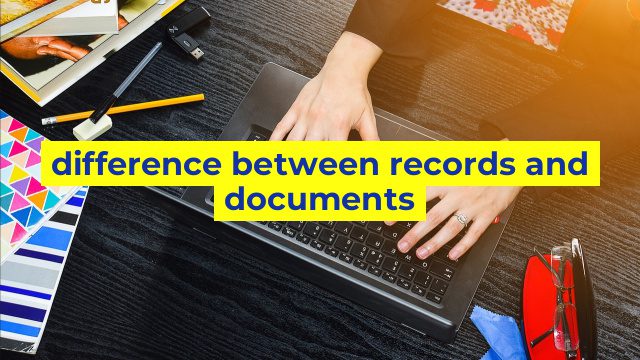The Fundamental Difference Between Records and Documents
When it comes to managing information and data within an organization, there is often confusion surrounding the terms records and documents. Although many people use these words interchangeably, records and documents actually represent distinct types of information.
What is a Document?
A document is any material that contains information and can provide evidence of an event or process. This may include digital files, physical papers, images or artifacts. Documents can be created internally, such as reports or memos, or received from external sources, such as contracts or invoices.
Most importantly, documents are often used to provide insight or support to an organization’s decision-making process. Important documents within an organization are shared through email or housed on shared drives.
What is a Record?
By contrast, a record is an official document that reflects significant transactions, decisions or actions taken by an organization. These may include meeting minutes, contracts or legal documents, accounting records and personnel files.
Records are unique in that they are often created to satisfy compliance requirements or legal mandates. These files must be carefully managed, tracked and archived in a systematic manner in order to ensure their validity, confidentiality and availability.
The Importance of Proper Document and Record Management
The ability to distinguish between documents and records is crucial in order to establish trusted documents and records management. Ensuring that all documents and records are properly catalogued, tracked, and indexed can result in an organized, streamlined, and user-friendly system.
A solid document and records management program ensures that data or information is securely stored, making it easy to retrieve in case of a critical event or audit. Mismanaged records and data could lead to painful and perilous litigation, losing clients and reputation damage, as well as threaten the organization’s very existence as a whole.
In summary, understanding the difference between records and documents is essential for effective document and records management within your organization. Using the right tools and technology to process these documents and records can facilitate your work and streamline your business processes. Ultimately, it helps ensuring that you are able take care of your organization’s information assets in the most efficient, secure and compliant way.
Table difference between records and documents
| Records | Documents | |
|---|---|---|
| Definition | An official written record of an event or activity | A written or printed record that provides information or evidence or that serves as an official instrument or communication |
| Purpose | To provide evidence of an event or activity that has taken place | To convey information or knowledge |
| Examples | Medical records, financial records, employment records | Reports, manuals, contracts, letters |
| Format | Often structured forms or databases | Varies depending on the type of document |
| Storage | Typically stored in a secure location or electronic database | May be stored physically or electronically, depending on the type of document |
